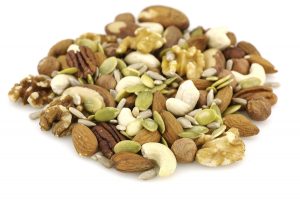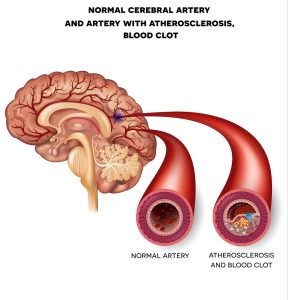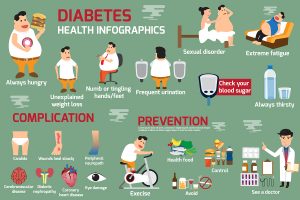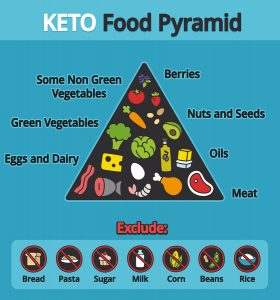Several speakers in Las Vegas said that the fasting mimicking diet is very relevant for health and longevity. This happened on day 1 of the 26th Annual A4M World Congress 2018 in Las Vegas.
What were the findings that are relevant?
Dr. Longo has done a lot of animal experiments with intermittent fasting and studying longevity. He repeated what he has learnt over the years from animal experiments and from research on humans. Here are the results that he shared already at last year’s Anti-aging Conference in Las Vegas.
Effects of fasting mimicking diet
- Obesity diminishes, because of the weight loss effect due to missing calories.
- Diabetes: insulin resistance becomes lower and blood sugar levels drop.
- High blood pressure reduced: many patients were able to reduce their medications or discontinue them
- Pain conditions improve as all kinds of pain disappears, an effect for which there is no explanation at this point
- Autoimmune diseases like MS and rheumatoid arthritis improve, likely because of the effect of increased stem cell circulation
- Prevention of heart attacks and strokes because of reduction of LDL, triglycerides and CRP
- Cancer cure rates improve by protecting normal cells and the bone marrow
- Longevity improved in mice with a 3-fold increase of their life span. Telomere length in humans was increased. Increased stem cells will find defective areas that need repair. This effect leads to less disease in older age.
Increased life span, less heart attack and cancer rates
We know from these animal experiments that mice have a threefold increase in life span. But when heart attack rates and stroke rates improve in humans, cancer cure rates improve and telomere length in humans increase, there is strong evidence that it increases human life expectancy as well. It may take another 10 to 20 years before we have better statistics about the real survival advantage on this diet versus the Standard American diet. But what we know now is a significant start.
Patients on chemotherapy and FMD have much better healing rates than controls
The lecture by Dr. Longo on Dec. 13, 2018 did provide more human data. Patients undergoing chemotherapy tolerate and survive chemotherapy much better when combined with the fasting mimicking diet (FMD). The human data is very similar to the previous mouse model data. This human research was done at the Charité Hospital in Berlin, Germany. Dr. Longo is starting to engage in clinical trials by partnering with physicians, but the publication of this will take several years. In the meantime the FMD is an effective way to rejuvenate on an ongoing basis. Since last year I underwent 12 courses of 5-day FMD every month. Dr. Longo says that even 3 to 4 courses of FMD per year would have a lasting rejuvenating effect.
About the right food intake and getting enough sleep
Dr. La Valle gave a talk in the afternoon of the first conference day where he pointed out several important things. He started his talk by saying that North Americans eat the wrong foods, they eat too much of it and they often eat it at the wrong time (in the middle of the night when the body wants to rest). This can interfere with our diurnal hormone rhythm, which in turn will eventually lead to inflammation in the body. Fasting overnight rests our hormone receptors so they are fully active the following day.
Preventing Alzheimer’s disease
Dr. La Valle praised the FMD as being able to elevate brain derived neurotropic factor. Newer research is pointing at the importance of this factor for preventing Alzheimer’s disease and Parkinson’s disease. He pointed out that the FMD is a good start to change other things in a patient’s life. Such things like exercise, bioidentical hormone replacement and taking vitamins and supplements. All of these all in combination will build up a patient’s health.
More human data about anti-aging
The internist, Dr. Kurt Hong said that he is seeing 200 patients every week. He has done clinical studies on various forms of fasting. The FMD, he said he liked best as it is easy to do (5 days out of one month 500 calories on each of the FMD days). Dr. Hong has seen amazing improvements in patients with MS, Hashimoto’s disease and Crohn’s disease. His talk concentrated on how fasting improved the metabolic syndrome, improved inflammation in the body and improved immune diseases. The FOXO pathway involves transcription factors that are important to regulate cell death (apoptosis). A variant of FOXO3 is responsible for longevity in humans and has been found in centenarians.
Dr. Hong pointed out that self-cleaning (autophagy) is an important rejuvenation process in the body. The FMD stimulates this process. In a 2017 study Dr. Longo and Dr. Hong compared 100 regular patients with 100 patients on the FMD. Only the patients on the FMD showed that the body weight came down. In addition the blood pressure came down as well and the pluripotent stem cells in the blood were up. So, the FMD has a positive effect on various organ systems without any medication. The strongest effect of the FMD would be in the age group of 20 to 40 for anti-aging purposes as it stimulates stem cell production and elongates telomeres.
Fasting and women’s health
Dr. Felice Gersh gave a talk about the effects of fasting on women’s health. She pointed out how important estrogen is in a woman for every organ system. All of the major organ systems including the skin have estrogen receptors. Estrogen stimulates the metabolism. It stimulates the immune system by stimulating macrophages that also have estrogen receptors. In menopause less estrogen production leads to a lack of energy, because the mitochondria are no longer stimulated as they were before. Estrogen also stimulates sirtuins, which is important for anti-aging. Studies with the FMD have shown that estrogen production is re-stimulated in women.
Dr. Joel Kahn was another speaker in the afternoon. He talked about how important the FMD is for cardiovascular health. He does not think that coronary artery surgeries and stents will suddenly get abandoned, but he thinks that the FMD is a powerful tool to delay arteriosclerosis in the arteries. This will delay coronary artery lesions from developing and will add life. In his opinion 40 to 60 year old patients should start using the FMD to prevent cardiovascular disease.
Aging drives chronic disease
Sebastian Brandhorst, PhD pointed out that if we stay active and eat healthy, we will age well. The US is the only country on earth where the life expectancy goes down after there was an initial health gain in the past.
Yeast, worms, flies and mammals follow a nutrient-sensing pathway. That means when food is not around, starvation increases resistance to a variety of toxins. One important aspect of the FMD is the observation that it protects the body against the toxic effects from chemotherapy. FMD and chemotherapy combined almost completely blocked progression of breast cancer in mice. Further studies showed that cytotoxic T cells were responsible for stopping cancer growth. When antibodies against T cells were administered, the beneficial cytotoxic T cell effects against cancer were wiped out. In humans the same protective effect of the FMD was observed. The FMD combined with chemotherapy gave the best survival data in cancer patients.
Conclusion
The fasting mimicking diet (FMD) was ranking very prominently among last year’s anti-aging conference in Las Vegas. Several speakers of this year’s anti-aging conference pointed to the health supporting effect of the FMD. It is now evident that the previous findings in animal research are also true in humans. Missing at this time are prolonged clinical trials that analyze the mechanisms of why the FMD works so well. In the meantime everybody can safely use FMD 5 days out of every month, which will rejuvenate your system by gradually prolonging pluripotent stem cell activation and telomere lengthening. It is just a matter of time when the missing links will be filled in.
More info: intermittent fasting may benefit health.















